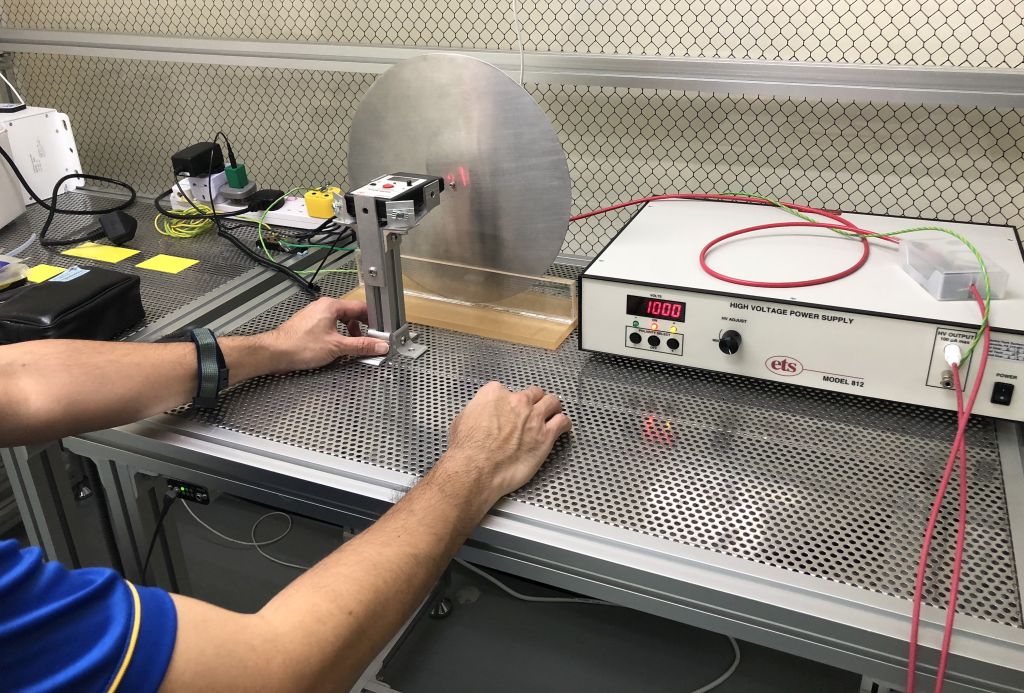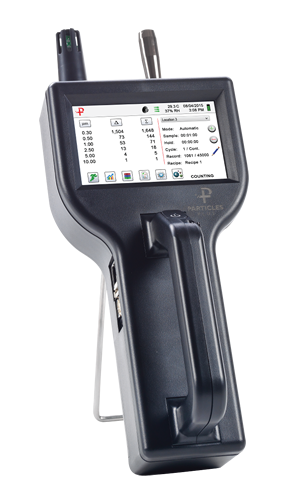Modern machinery ensures precision, reliability, and productivity in industrial and scientific institutions. Room ionizers, autoclaves, ESD testers, auditors, static controllers, and AMC analyzers are essential. Each affects process and product integrity.
Ionizers in the room make the air safer and better.
How do air purifiers in rooms work?
A room ionizer makes the air better by releasing negative ions that make particles in the air heavier and cause them to fall to the ground. The process lowers the amount of dust, pollen, mold spores, and germs in the air, making it better.
Room ionizers—win-win
When air quality matters, room ionizer help. They improve worker health and minimize airborne diseases and allergies. They are crucial in labs and cleanrooms where airborne particles could damage research or production.
Function of Room Ionizers
Room ionizers produce negative ions from corona discharge. Ionization settles negatively charged air particles. Electronics manufacture, like other delicate industries, needs clean air and no static.
Safe, sterile autoclaves
Is it autoclave?
An autoclave is used for industrial processes that need high temperatures and pressures. Medical autoclaves sterilize surgical tools, drugs, lab equipment, and other non-living things.
Some autoclaves use steam-flush pressure pulses, pre-vacuum, or gravity displacement. There are many air extraction and steam supply methods for sterilization.
Importance of Lab Devices for sealing
Laboratory autoclaves sterilize tools and supplies. This ensures accurate results and prevents experiment contamination. Autoclaves clean biohazardous waste before disposal.
Electrostatic Discharge Prevention with ESD Testing
ESD, what?
Electrostatic discharge (ESD) occurs when two electrically charged items meet, short circuit, or lose dielectric. Electronic components can fail due to ESD damage.

The Value of Electrostatic Testing
ESD testing detects vulnerabilities and ensures electronic devices can survive electrostatic events. This testing simulates ESD occurrences to assess electronic component and system resilience.
ESD Evaluation Tools
HBM, CDM, and MM are used in ESD testing. All of these methods simulate ESD events to test device durability.
Effective ESD Assessment
ESD audits should examine ionization, ESD-safe workstations, grounding of people and equipment, and other ESD controls. Auditors evaluate employees’ ESD safety training.
Protection of Highly Sensitive Areas Using Static Control
How Does Static Control Work?
Static control strategies reduce static electricity in critical areas. Electronics manufacturers must do this because static electricity damages components and disrupts processes.
Static Control Methods
Antistatic chemicals, ionization, and grounding control static electricity. Grounding people and equipment disperses static. Antistatic compounds prevent static electricity, while ionization removes airborne static charges.

Static Control Benefits That Work
Static control improves process and product safety. It meets industrial standards while protecting electronics and preventing accidents. Accurate manufacturing and research require a clean, regulated environment.
By employing AMC devices, we may monitor airborne molecular contaminants.
What’s AMC Analyzer?
Airborne molecular contaminants (AMCs) analyzers measure airborne pollutants. In delicate environments, vapors, acids, bases, and other chemicals can impact products and processes.
AMC Cleanroom Function Analyzers
Cleanrooms need airborne particulate matter (AMC) analyzers to prevent product and process contamination. They monitor air quality in real time to reduce pollution.
Different AMC Analyzers
We use room ionizers and autoclaves, test and audit ESD, manage static, and evaluate AMC data.

A thorough cleanroom plan
A high-quality, safe, and efficient laboratory or factory environment requires room ionizers, autoclaves, ESD testing, ESD audits, static control methods, and AMC analyzer. Each element protects operations and products differently.
Implementation Recommended Ways
Organizations need comprehensive cleanroom management to achieve these components. This covers air quality, static control, employee training, and equipment maintenance and calibration.
Value of Continuous Development
Continuous improvement is needed to maintain cleanroom standards. Businesses should establish new procedures, audit often, and adopt new technology to reduce risks and improve quality and safety.
In summary
Current manufacturing and research facilities need room ionizers, autoclaves, ESD testing, audits, static control, and AMC analyzers. Each is essential for efficiency, precision, and safety. Organizations can establish comprehensive strategies to protect their processes and goods by understanding their operations and best practices.
